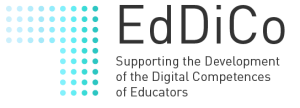Digiopetuksen sisällöt ja materiaalit
Oppimisprosessin suunnittelu kokonaisuudessa linkittyy vahvasti oppimateriaalien tuottamiseen. Siinä tulisi olla aina jokin pedagoginen lähtökohta, jossa on mietitty, miten materiaalia hyödynnetään opintojaksolla. Digitaalisuus tarjoaa paljon enemmän mahdollisuuksia tähän. Digitaalisen oppimateriaalin ohella käytetyt oppimisympäristöt vaikuttavat siihen, miten materiaalia voidaan hyödyntää osana osaamistavoitteisiin pääsemistä. Materiaaleja suunniteltaessa kannattaa miettiä myös miten voisi osallistaa opiskelijat osaksi yhteisöllistä tiedontuottamista.
Digitaaliseen oppimateriaaliin tulee panostaa ja toisaalta digitaalisuus mahdollistaa hyvin monimuotoisten sekä vaihtelevien aineistojen hyödyntämisen opetuksessa. Sisällöntuotannon ja oppimateriaalin käsikirjoittamisen hallinta ovat siis tärkeä osa opettajan ammattitaitoa. Verkko-oppimisympäristöihin sisältöä suositellaan tuotettavaksi pienemmissä osissa sekä erilaisissa formaateissa (esim. teksti, kuva, video, interaktiivisuus, jne.). Digitaalisen oppimateriaalin muotoa kannattaa harkita tavallista tarkemmin. Mieti, mitä kannattaa tuottaa tekstiksi, mitä osuuksia tekstistä voisi korvata videoilla, äänitiedostoilla, kuvilla, animaatioilla, peleillä, tehtävillä tai testeillä. Lisäksi on hyvä pohtia miten osallistaa opiskelijat tiedontuottamisen rooliin.

